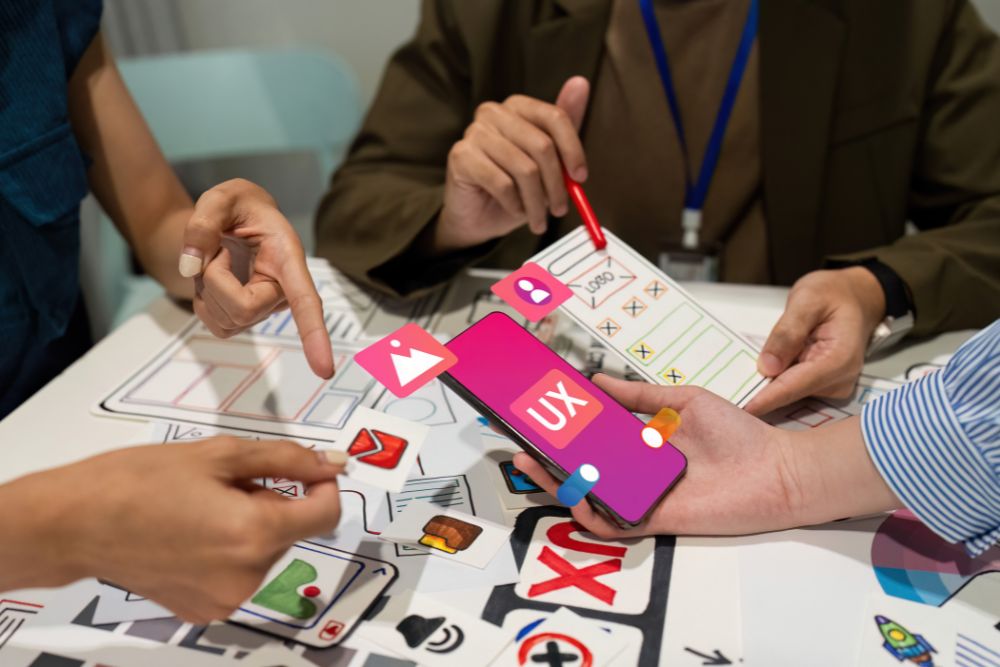Try to remember the first time you saw someone use a touchscreen. A small finger poked at a bright square, and something changed on the screen. This is the simple magic of user interfaces: things move, change, or react without tools, just a touch or click. Good UI design makes this magic strong. Bad design feels heavy, broken, or just odd.
Imagine you are walking into a large train station full of signs. Some signs point you to the exit, some point to tea stalls. If the signs are clear and easy, you find your way without worry. If not, every step feels slower. Building a good UI is like putting the best signs in the simplest places. Here are ten rules for making your digital signs easy for everyone, anywhere on Earth, to follow and enjoy.
Top Best 10 Essential UI Design Principles for a Seamless User Experience
Clear Paths for Every Step

Picture two lines painted on the ground at a busy bazaar: one for people going to the fruit stalls, one for those going to the spice corner. No mixing, no confusion. When you design a website or app, your job is to mark safe, clear roads for users. Every tap, click, or scroll has to move the person in the right direction, with no guesswork.
Make sure buttons, menus, and links all take visitors smoothly from one step to another. If someone wants to buy a ticket or find contact details, the path should be simple and obvious.
Use Colors That Speak Gently

Colors are not only for making things look nice. They help people know what is important. Green can mean go, red can mean stop, blue can calm worries. But too many colors are like too many voices in a small room—no one can be heard.
Choose a small family of colors, let each one have a single job, and always check that words and backgrounds are different enough that every eye can read them with ease. If unsure, ask a friend who sees colors differently to look and share their thoughts. This helps make your site friendly for everyone, including those who see colors in a unique way.
Make Words Short and Warm

No one wants to read long stories when trying to buy a train ticket or send money to a cousin. Use short words. Use simple words. If you are not sure, try to read your app out loud to a ten-year-old child. If the child can say the sentence back to you, your UI is easy enough for everyone.
Welcome users as if they are guests at your door, not students facing an exam. Say what you need with few words. For example, instead of “Submit your information for verification,” say “Send your details.” Clear, friendly words make users feel comfortable.
Let Buttons Feel Like Real Buttons

Everyone knows how it feels to press a real doorbell. It gives a click and maybe a little pushback. In apps, let every button look easy to tap, and change color or shape when touched.
If your friend has big fingers or shaky hands, test if they can press the button without trouble. Space things out. No race—each tap should feel relaxed. This makes the experience less frustrating and more welcoming.
Keep Things the Same from Page to Page

If your tea cup has its handle on the left today, moving it to the right tomorrow makes your morning awkward. This is why every page or screen in your app should put menus, logos, and actions in the same spot.
Let people build trust; let their fingers move before their brains must worry. Imagine a book where chapters flip wildly—it would be hard to follow. Good UI is steady and consistent.
Leave Room for Mistakes

Everyone spills their tea sometimes. Your design must forgive small accidents. If someone deletes a photo, ask, “Are you sure?” before it disappears. If a password is wrong, say which bit is off, not just “Try again.” Show the way back home—always keep a “cancel” or “undo” sign nearby.
This “safety net” helps users feel safe and less nervous about using your app or site. It’s like a friend gently saying, “No worries, you can fix that.”
Show What Matters First

Walk the streets during Navratri or Diwali: lights show you where to look. Your homepage, sign-up form, or order screen should glow most at the next right step.
Use size and space to guide the journey—big titles, quiet footnotes. Remember, when everything shouts, no one can listen. Highlight the most important buttons and information boldly, so the eyes catch them first.
Small Delays Need Honest Signals

You press a button, nothing happens. Ten seconds later, you leave, thinking the app is broken. Instead, use a spinning dot, a bar growing from left to right, or a playful message: “We’re fetching your samosa order!”
Never let your users stare at a still screen, wondering if anyone heard their voice. These small moments of feedback keep people patient and trusting.
Easy Paths for All Screens

Some people scroll on phones with cracked glass. Some work on slow computers in hot villages. Always test your design on different screens and old devices.
Make sure menus work with fat thumbs and tiny pinky fingers. Size your words so elders and young ones don’t need to squint. Keep the air light—remove extra pictures or things that slow pages down. The goal is smooth and quick, no matter the device.
Listen More Than You Talk

The most important lesson: A great design is not about you, the maker. It’s about every single person who visits. Watch how they use it. Where do they pause? Where do they skip? Who turns around before the last step?
Ask questions in real life—at markets, in classrooms, on the bus. Each change you make after listening turns small troubles into smooth rides. Your users are your guides.
Good UI is like a well-swept path in a busy city lane. It does not wave or show off. It lets people walk, stop, look, and return home with ease. Let your design be the quiet friend who points to the right bus. May your digital roads never lose a traveler.

